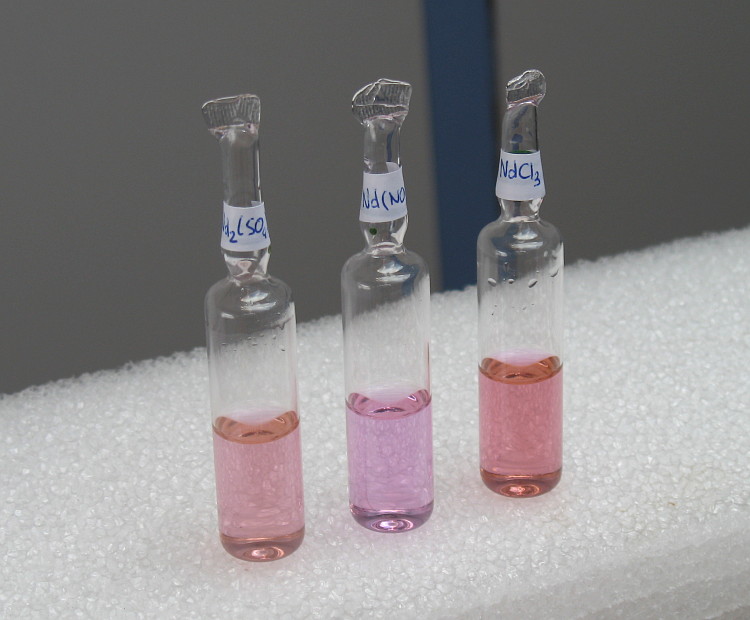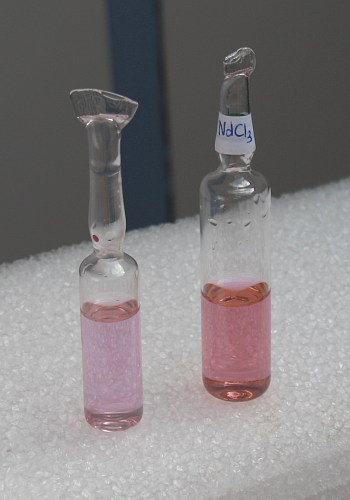Fe/SCN test for small (expected) amounts of Fe must be done in strongly acidic conditions, 1 M total concentration of HCl would be ok. High
(relatively) amount of thiocyanate should be used (because of not very large stability of Fe(III) complex).
And the most important: extraction of formed red complex into polar organic phase. Extracted complex (in form of "ferrithiocyanate acid") is more
stable in this medium than in water.
For testing in tubes, 0,5 cm3 (or similar amount) of organic solvent should be used, with shaking and allowing to separate.
Good extractants are higher alcohols, for example (n-)butanol (interesting, n-butyl acetate does not extract this complex from water)
PS. instead of 1 ml 70% HNO3, one or two drops would be better, but I prefer H2O2 instead of HNO3.
|









